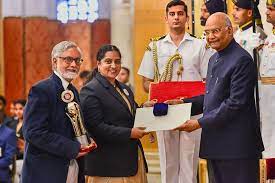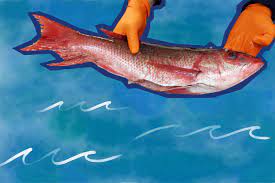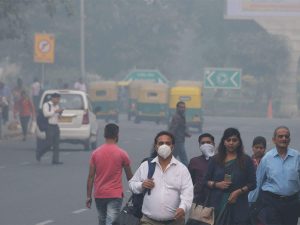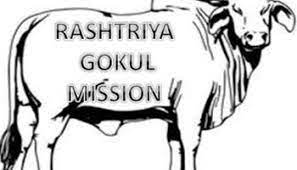Today Current Affairs: 27th September 2021 for UPSC IAS exams, State PSC exams, SSC CGL, State SSC, RRB, Railways, Banking Exam & IBPS, etc
Table of Contents
GI Tagged Feni: Goa:

The Goa government’s Feni Policy 2021 has paved the way to take the GI (Geographical Indication) Certified Goan Cashew Feni forward at par with other international Liquors such as Mexico’s tequila, Japanese Sake and Russia’s Vodka.
- The Goa government in 2016 classified Feni as the Heritage Spirit of Goa.
Goan Cashew Feni:
- It is the first liquor product in the country to obtain ‘Heritage Drink’ status and got its GI certification in 2000. Only the cashew feni has been GI-tagged.
- Feni is a brew made from coconut or cashew fruits and is synonymous with the Goan ethos and identity.
- Feni was first manufactured in Goa in the 1600s, after the Portuguese imported the cashew plant from Brazil to India. There are currently 26 varieties of feni manufactured in Goa.
- It is used in various cultural traditions, cuisines and is well known for its medicinal value also
Geographical Indication (GI) Certification:
- GI is an indication used to identify goods having special characteristics originating from a definite geographical territory.
- It is used for agricultural, natural and manufactured goods.
- The Geographical Indications of Goods (Registration and Protection) Act, 1999 seeks to provide for the registration and better protection of geographical indications relating to goods in India.
- It is also a part of the World Trade Organisation’s Trade-Related Aspects of Intellectual Property Rights (TRIPS).
- The Controller General of Patents, Designs and TradeMarks- who is the Registrar of Geographical Indications.
- The Geographical Indications Registry is located at Chennai.
- The registration of a geographical indication is valid for a period of 10 years.
- It can be renewed from time to time for a further period of 10 years each.
National Service Scheme (NSS) Awards:

The President of India conferred the National Service Scheme (NSS) Awards for 2019-20.
- Under NSS Awards 2019-20, 42 awardees in different categories such as University or (+2) Councils, NSS Units and their programme officers and NSS volunteers were conferred with these awards.
- The NSS Awards were instituted by the Ministry of Youth Affairs and Sports in 1993-94 on the occasion of the Silver Jubilee Year of National Service Scheme.
- It recognises and rewards outstanding contributions towards voluntary community service made by universities or colleges, councils, senior secondary, NSS units and programme officers and NSS volunteers to further promote NSS in the country.
- Objectives:
- To encourage young NSS student volunteers to develop their personality through community service.
- To encourage the Programme Officers and the Programme Coordinators of NSS for catering the needs of NSS through the NSS volunteers.
- To motivate NSS Volunteers for continuing their selfless service towards community work.
National Service Scheme:
- NSS is a Central Sector Scheme that was launched in 1969 with the objective of developing the personality and character of the student youth through voluntary community service. The ideology of NSS is inspired by the ideals of Mahatma Gandhi.
- Its Motto is Not me but You.
- They work on issues of social relevance through regular and special camping activities – including literacy and education, health, family welfare and nutrition, environment conservation, social service programmes, programmes for the empowerment of women, programmes connected with economic development activities, rescue and relief during calamities, etc.
Plant Discoveries 2020:

The Botanical Survey of India (BSI), in its new publication Plant Discoveries 2020 has added 267 new taxa/ species to the country’s flora.
- Earlier, the United Nations Convention on Biological Diversity (CBD) demanded an additional USD 200 billion fund flow to developing countries from various sources to manage nature through 2030.
- The new Discovery to the flora of India include 119 species of seed plants, 57 species of fungi, 44 species of lichens, 21 species of algae, 18 species of microbes, five species of bryophytes and three species of fern and fern allies.
- India has about 45,000 species of plants, already identified and classified, which account for about 7% of the total plant species of the world.
- About 28% of the Indian plants are endemic to the country.
- Few examples among the new discoveries are:
- Nine new species of balsams (Impatiens) and one species of wild banana (Musa pradhanii) from Darjeeling.
- One species each of wild jamun (Sygygium anamalaianum) from Coimbatore.
- Fern species (Selaginella odishana) Kandhamal in Odisha.
Blue Foods And Its Advantages:

A report titled Environmental performance of blue foods has stated that the Aquatic or blue foods can be made more environmentally sustainable than they are now.
- The report is published as part of the Blue Food Assessment (BFA).
- The BFA is a collaboration between Sweden-based Stockholm Resilience Centre, United States-based Stanford University and the non-profit EAT.
About Blue Foods and its Advantages:
- Blue foods are food derived from aquatic animals, plants or algae that are caught or cultivated in freshwater and marine environments.
- They are found to rank more highly than terrestrial animal-source foods in terms of their nutritional benefits and potential for sustainability gains.
- Many blue food species are rich in important nutrients like omega-3 fatty acids, vitamins and minerals.
- On average, the major species produced in aquaculture, such as tilapia, salmon, catfish and carp, were found to have lower environmental footprints comparable to terrestrial meat.
About the Report:
- The report has uncovered that Blue foods and the waters in which they grow will have an essential role to play in the shift towards healthy, equitable and sustainable food systems.
- The production of blue food generates the fewest greenhouse gas and nutrient emissions and uses the least land and water.
- Capture fisheries refers to all kinds of harvesting of naturally occurring living resources in both marine and freshwater environments.
- These have the potential to reduce greenhouse gas emissions through improved management and optimising gear types.
- Investing in innovation and improving fisheries management could increase consumption even more and have profound effects on malnutrition.
- Promotion of Blue food will help in fulfillment of many Sustainable development Goals (SDG 2 – Nutrition and 14 – Sustainable use of marine resources).
Report On Climate Indicators & Sustainable Development: WMO:

The World Meteorological Organization (WMO) has published a new report on Climate Indicators and Sustainable Development: Demonstrating the Interconnections.
- WMO studied seven climate indicators — carbon dioxide (CO2) concentration, temperature, ocean acidification and heat, sea ice extent, glacier melt and sea-level rise.
- Its release coincides with the United Nations General Assembly annual session and the opening in September 2021 of the Sustainable Development Goals (SDGs) Action Zone, which is dedicated to accelerating action on the SDGs.
Aim:
- To contribute to the sustainable development agenda and to inspire leaders to take bolder climate action.
Importance: - In the face of ongoing climate change, poverty, inequality and environmental degradation, understanding the connections between climate and international development is a matter of urgency.
- Increasing temperatures will result in global and regional changes, leading to shifts in rainfall patterns and agricultural seasons. The intensification of El Niño events is also generating more droughts and floods.
Rising CO2 Concentration:
- The rising concentration of CO2 will impact all of the 17 United Nations-mandated SDGs.
- Rising CO2 concentration due to human activities is a key driver of global climate change.
Impact on SDGs:
- Rising CO2 concentration and increasing global temperatures, if left unchecked, would negatively impact efforts to combat climate change under the SDG 13.
- This, in turn, would pose a significant threat to the achievement of the 16 SDGs other than SDG 13, by 2030.
- This would happen because uncontrolled rising CO2 emissions would be indirectly responsible for risks related to the remaining six climate indicators, namely temperature, ocean acidification and heat, sea ice extent, glacier melt and sea-level rise.
- For instance, rising concentrations of CO2 in the atmosphere will lead to reductions in nutrient content, affecting food security or the SDG indicator 2.1.2.
- This would affect the global goal on tackling poverty, SDG 1, as well.
- Rising CO2 in water would cause ocean acidification, directly affecting SDG indicator 14.3.1 which addresses marine acidity.
- Both food insecurity and loss of livelihood may drive conflicts related to resource management, thus threatening regional peace and stability (SDG 16.1).
- Extreme events attributed to rising temperature affect rainfall patterns and groundwater availability, which leads to a higher risk of water scarcity, directly affecting SDG 6 on access to water and specially the targets.
Medical Device Parks Scheme:

The Ministry of Chemicals and Fertilizers has launched the Scheme for “Promotion of Medical Device Parks” to support the medical devices industry in line with Atmanirbhar Bharat.
- The medical device industry is a unique blend of engineering and medicine. It involves the creation of machines that are used to support life within the human body.
- Medical devices include Surgical Equipment, Diagnostic equipment like Cardiac imaging, CT scans, X-ray, Molecular Imaging, MRI and Ultrasound-imaging including hand – held devices; Life Support equipment like ventilator, etc. as well as Implants and Disposables.
Objectives:
- The easy access to standard testing and infrastructure facilities through the creation of world-class common infrastructure facilities via medical device parks.
- To reduce the cost of production of medical devices and the better availability and affordability of medical devices in the domestic market.
Financial Assistance:
- The total financial outlay of the scheme is Rs 400 crore and the tenure of the scheme is from FY 2020-2021 to FY 2024-2025.
- Financial assistance to a selected Medical Device Park would be 70% of the project cost of common infrastructure facilities.
- In the case of the North-Eastern States and the Hilly States, financial assistance would be 90% of the project cost.
- Maximum assistance under the scheme for one Medical Device Park would be limited to Rs. 100 crores.
- The Centre has granted in-principal approval for the parks in Himachal Pradesh, Tamil Nadu, Madhya Pradesh and Uttar Pradesh.
Naga Peace Process:

Tamil Nadu Governor R N Ravi has resigned as interlocutor for the Naga peace process to prevent it from derailing.
- Ravi is the Governor of Nagaland and has been crossing swords with the extremist Isak-Muivah faction of the National Socialist Council of Nagaland or the NSCN (I-M) for almost two years.
- The process has been ongoing since mid-1997 when the NSCN (I-M) declared a ceasefire with the armed forces. Other groups began opting for talks in 2001.
- However, it has been put in a cold storage” since the Framework Agreement was signed on August 3, 2015.
- The British annexed Assam in 1826, and in 1881, the Naga Hills too became part of British India. The first sign of Naga resistance was seen in the formation of the Naga Club in 1918, which told the Simon Commission in 1929 “to leave us alone to determine for ourselves as in ancient times”.
- In 1946 came the Naga National Council (NNC), which declared Nagaland an independent state on August 14, 1947.
- The NNC resolved to establish a “sovereign Naga state” and conducted a “referendum” in 1951, in which “99 per cent” supported an “independent” Nagaland.
- On March 22, 1952, the Naga Federal Government (NFG) and the Naga Federal Army (NFA) were formed. The Government of India sent in the Army to crush the insurgency and, in 1958, enacted the Armed Forces (Special Powers) Act.
Agreement in this regard:
- The NSCN (IM) entered into a ceasefire agreement with the Centre in 1997 and the two have been holding talks since then, while a conglomerate of seven different Naga national political groups (NNPGs) also got into separate talks with the Centre since 2017.
- The Centre signed a “framework agreement” with NSCN (IM) in 2015, and an “agreed position” with the NNPGs in 2017. However, the NSCN (IM)’s demand for a separate Naga flag and constitution has been a delaying factor in signing a final deal on the protracted Naga political issue.
Rashtriya Gokul Mission:

A review meeting on the performance of the Rashtriya Gokul Mission was held recently.
- ‘Rashtriya Gokul Mission’ was launched in 2014 to conserve and develop indigenous bovine breeds, under the National Programme for Bovine Breeding and Dairy Development (NPBBD).
Key objectives of the mission
- Development and conservation of indigenous breeds.
- Undertake breed improvement programme for indigenous cattle breeds so as to improve the genetic makeup and increase the stock.
- Enhance milk production and productivity.
- Upgrade nondescript cattle using elite indigenous breeds like Gir, Sahiwal, Rathi, Deoni, Tharparkar, Red Sindhi.
- Distribute disease free high genetic merit bulls for natural service.
- It is being implemented through the “State Implementing Agency’ Livestock Development Boards, i.e., SIA’s (LDB’s).
- State Gauseva Ayogs are mandated to sponsor proposals to the SIA’s (LDB’s) and monitor implementation of the sponsored proposal.
- The “Participating Agencies” like CFSPTI, CCBFs, ICAR, Universities, Colleges, NGO’s, Cooperative Societies and Gaushalas with best germplasm.
The Rashtriya Gokul Mission envisages the establishment of integrated cattle development centers, ‘Gokul Grams’ to develop indigenous breeds including up to 40% nondescript breeds.
- They will be self-sustaining and will generate economic resources from sale of A2 milk organic manure, vermi-composting, urine distillates, and production of electricity fraom bio gas for in house consumption and sale of animal products.
- They will also function as state of the art in situ training centre for Farmers, Breeders and MAITRI’s.
- Gokul Grams act as Centres for development of Indigenous Breeds and a dependable source for supply of high genetic breeding stock to the farmers in the breeding tract.
- The Gokul Gram will maintain milch and unproductive animals in the ratio of 60:40 and will have the capacity to maintain about 1000 animals.
- Nutritional requirements of the animals will be provided in the Gokul Gram through in house fodder production
UN Food Systems Summit:

The UN Food Systems Summit is taking place in New York. It will seek to set the stage for global food systems transformation to achieve the Sustainable Development Goals by 2030.
- It is envisioned that the Summit will have objectives and outcomes including to:
- Raise awareness of food systems’ centrality to the entire sustainable development agenda, and the urgency of transforming food systems, particularly in the wake of a global pandemic.
- Align stakeholders around a common understanding and narrative of a food system framework as a foundation for concerted action, making food and food systems a more widespread issue for advocacy and action to achieve the 2030 Agenda.
- Recognize the need for inclusivity and innovation in food systems governance and action.
- Motivate and empower stakeholders who support food systems transformation through the development of improved tools, measurement, and analysis.
- Catalyze, accelerate, and enlarge bold action for the transformation of food systems by all communities, including countries, cities, companies, civil society, citizens, and food producers.
- Five action areas to help inform the transitions needed to realise the vision of the 2030 agenda have emerged from the Summit process. These include:
- Nourish all people.
- Boost nature-based solutions.
- Advance equitable livelihoods, decent work and empowered communities.
- Build resilience to vulnerabilities, shocks and stresses.
- Support means of implementation.
About the Summit:
- The Food Systems Summit is convened as part of the Decade of Action to achieve the Sustainable Development Goals (SDGs) by 2030.
- The Summit will launch bold new actions to deliver progress on all 17 SDGs, each of which relies to some degree on healthier, more sustainable and equitable food systems.
- Guided by five Action Tracks, the Summit will bring together key players from the worlds of science, business, policy, healthcare and academia, as well as farmers.
Ayushman Bharat PMJAY.:

The world’s largest healthcare scheme Ayushman Bharat Pradhan Mantri Jan Arogya Yojana (AB-PMJAY) has completed three years. It was launched on September 23rd, 2018.
Key Features of PM-JAY:
- The world’s largest health insurance/ assurance scheme fully financed by the government.
- It provides cover of 5 lakhs per family per year, for secondary and tertiary care hospitalization across public and private empaneled hospitals in India.
- Coverage: Over 10.74 crore poor and vulnerable entitled families (approximately 50 crore beneficiaries) are eligible for these benefits.
- Provides cashless access to health care services for the beneficiary at the point of service.
- The National Health Authority (NHA) is the nodal agency responsible for the nationwide roll-out and implementation of the AB-PMJAY scheme.
- This scheme is a Centrally sponsored scheme with some Central sector components.
- The Pradhan Mantri Jan Arogya Yojana (PM-JAY) contributed to improvement in many health outcomes in States that implemented the programme.
- States that joined the PM-JAY, compared to those that did not, experienced greater penetration of health insurance, reduction in infant and child mortality rates, realised improved access and utilisation of family planning services and greater awareness of HIV/AIDS.
- Across all the States, the proportion of households with health insurance increased by 54% for States that implemented PM-JAY while falling by 10% in States that did not.




